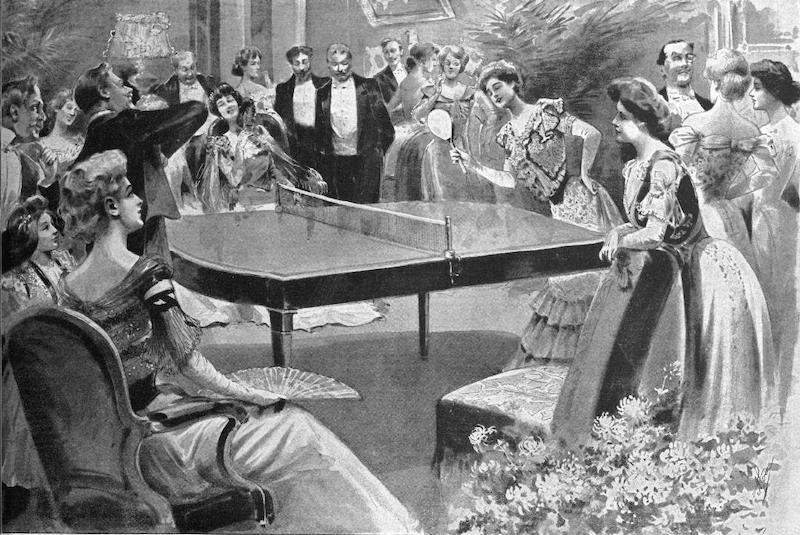Would the availability of a sport, suitable for all ages, be a welcome addition to the Community Centre?
At the last the Committee meeting, it was agreed to look into the possibility of buying a couple of table tennis tables. The sport seems to be growing in popularity, especially among older people. It is an excellent way of keeping mobile and meeting people as well as offering the added excitement of thrashing your opponent! It’s good fun for youngsters as well, a classic youth club activity.
Before we make any decision and commit to quite a large expenditure, YOUR comments would be welcome.
Like many other sports, Table Tennis began, in England, as a mild social diversion. It was probably played with improvised equipment in England, during the last quarter of the 19th century. Though Table Tennis evolved, along with Badminton and Lawn Tennis, from the ancient game of Tennis, the game was developed after Lawn Tennis became popular in the 1880s.
The earliest surviving action game of Tennis on a table is a set made by David Foster, patented in England in 1890. Not until a celluloid ball became available did the game of tennis on a table become a viable game. The game of Ping Pong quickly caught on with the public and is know under a number of different names:
- Ping Pong or Gossima
- Ping Pong
- Table Tennis
- Whiff Waff
- Parlour Tennis
- Indoor Tennis
- Pom-Pom
- Pim-Pam
- Netto
- Clip-Clap
- Royal Game and others
In 1903 the Table Tennis Association and the Ping Pong Association merged and books were published on the game. The game has had peaks and troughs of popularity with the first World Championships being held in England in 1926 and from then until 1939 the game was dominated by players from Central Europe. In the mid 1950s Asia emerged as a breeding ground of champions with Japan and China winning most competitions. It became an Olympic sport in 1988 with doubles and singles competitions for both men and women.

